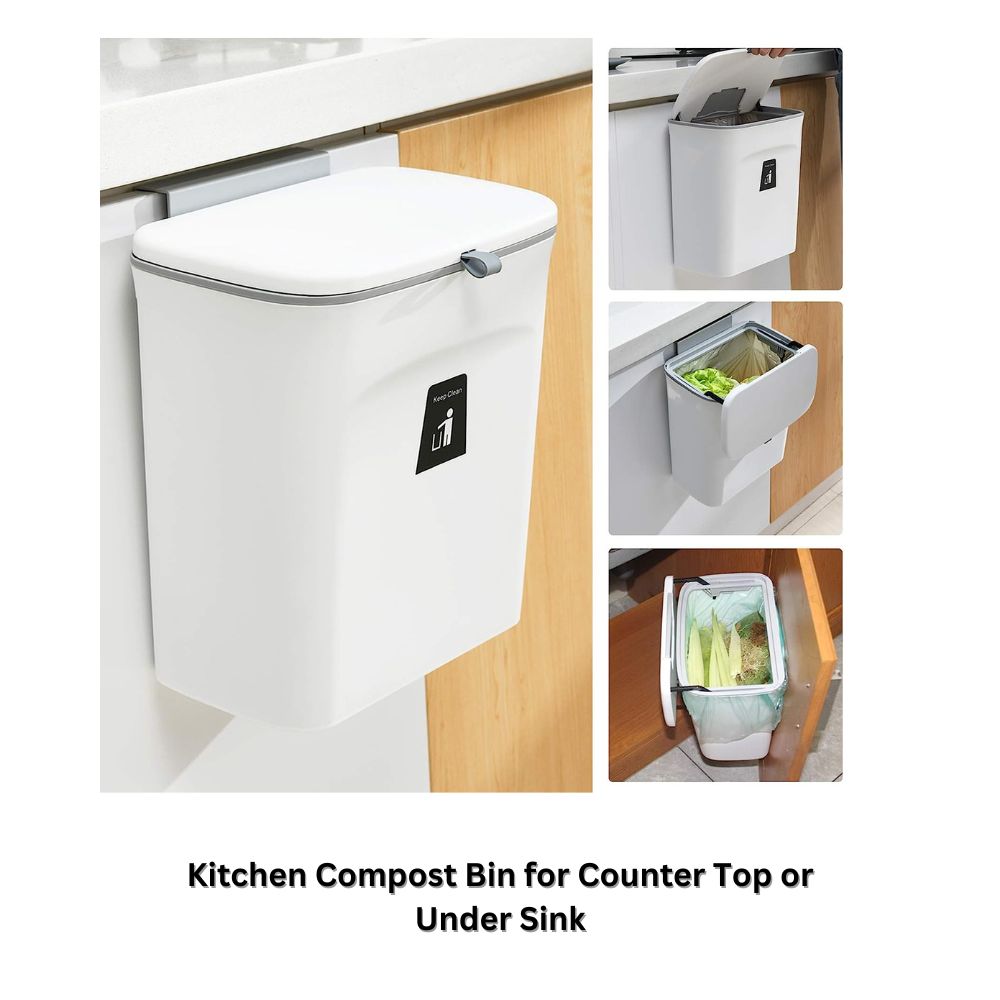Table of Contents
In today’s eco-conscious world, many of us are making an effort to reduce waste and live more sustainably. One significant step toward achieving this goal is composting, and a kitchen compost bin can be an excellent addition to your home. Whether you have a spacious kitchen or a cozy one, there’s a solution that fits your needs. In this guide, we’ll explore the benefits of kitchen composting and help you choose the perfect compost bin for your countertop or under-sink space.
Why Compost in the Kitchen?

Before diving into the details of kitchen compost bins, let’s briefly revisit why composting is such a valuable practice:
- Reduce Waste: Composting diverts organic materials from landfills, reducing the amount of waste that ends up in our already overflowing trash cans.
- Create Nutrient-Rich Soil: Compost creates nutrient-rich soil that can be used to enhance your garden’s health, resulting in healthier plants and less reliance on chemical fertilizers.
- Cut Down on Greenhouse Gas Emissions: Organic materials in landfills produce methane, a potent greenhouse gas. Composting reduces these emissions.
- Sustainable Lifestyle: Composting is a sustainable practice that aligns with the principles of reduce, reuse, and recycle.
Now that you understand the importance of kitchen composting, let’s explore the options for compost bins:
1. Counter-Top Compost Bins:
Counter-top compost bins are perfect for those who want a convenient, accessible, and visually pleasing composting solution. Here are some key features to consider:
- Size: Choose a size that fits your kitchen space. The bin should be large enough to hold a day or two’s worth of kitchen scraps but not so big that it overwhelms your counter.
- Material: Look for bins made of stainless steel, ceramic, or bamboo. These materials are not only durable but also aesthetically pleasing.
- Odor Control: Opt for a bin with a lid and a charcoal or carbon filter to contain odors.
- Easy to Clean: Check if the bin is dishwasher safe or easy to clean by hand.
2. Under-Sink Compost Bins:

Under-sink compost bins are ideal if you prefer a more discreet composting solution. Here’s what to consider:
- Size and Shape: Measure the available space under your sink to ensure a proper fit. Some bins are designed to hang on the cabinet door, maximizing space.
- Sealing Mechanism: Look for a bin with a tight-sealing lid to prevent odors and pests.
- Liner or Bags: Consider whether you want to use compostable liners or bags inside the bin for easier cleanup.
Recommended Product:
While we can’t endorse specific products directly, the linked product appears to be a popular choice on the market. Be sure to read reviews and compare it with other options to ensure it meets your specific needs.
Conclusion:
Incorporating a kitchen compost bin into your daily routine is a simple yet impactful step towards reducing waste and living more sustainably. Whether you opt for a counter-top or under-sink solution, the right compost bin can make the process easy, convenient, and odor-free. So, take the plunge into kitchen composting and watch your kitchen scraps transform into nutrient-rich soil for a greener future!

